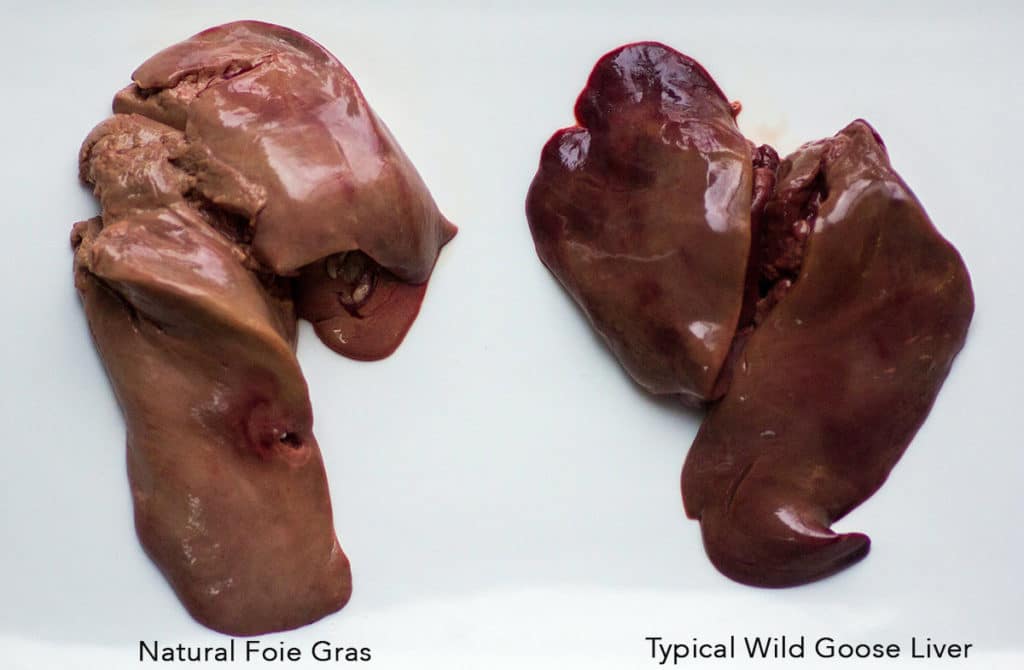Foie Gras (pronounced “fwa-grah“)
There are rarities in the hunting and fishing world that most of us will never see. A 200 inch whitetail deer, a 30 inch walleye, or a banded duck to name just a few. I’ve shot a banded duck, I have caught a 30 inch walleye, and I have never even seen a 200 inch deer. However, this last hunting season revealed a couple of rarities that were completely new to me. A spruce grouse and a natural foie gras, and they were both a real joy to experience.
Pleasant Surprises
Back in September while on a canoe trip with my younger brother, I saw and ate my very first spruce grouse. Having only dark meat under its feathers this bird has a reputation for tasting a little piney. Personally, I found it to be a tender and delicious.
At the end of the duck season while hunting in Wisconsin I shot a large and very fat Canada goose. The size of the goose amazed me but when I plucked it and reached inside to remove the heart, liver and gizzard I immediately felt something different.
The liver of that goose felt larger than others I had pulled out recently. When it came out I knew exactly what I had, a natural Foie Gras.
The Controversy
Foie Gras can be a controversial topic. It is the liver of a duck or goose that has been gorged with food in a domestic setting by it’s handler. This process causes the liver to retain fat, swell and change from a deep reddish purple to a pale tan color.
What most people fail to understand is that this is also a natural process that can occur in the wild. During fall migration some ducks and geese will gorge themselves on various edibles causing their livers to swell and retain fat. Those fat stores are then burned during the long flights south. This typically happens most in puddle ducks and Canada geese that spend a lot of time in corn and bean fields.
Many people object to the way foie gras is made today because of the method farmers use to feed their ducks and geese. It involves a funnel and forcing the fowl to gain massive amounts of weight so that the liver swells to 3-4 times its natural size. A natural foie occurring in the wild doesn’t get as large as one produced through this method, but it does taste just as good.
A Rare & Beautiful Thing
On very rare occasions a person will shoot a duck or goose where this natural phenomenon has occurred. If you have the opportunity to try one I’m confident that you’ll agree it’s a delicious treat. The extra fat tends to give the liver a milder flavor and a very pleasant texture that can melt in your mouth when cooked correctly.
A natural foie is not something you want to cook for a long period of time. I seared mine over medium high heat with a little salt for about a minute on each side. It goes really well with something a little sweet and acidic so I caramelized apples in butter and made a hard cider reduction to drizzle over it.
There is nothing in the world quite like it and the rarity of it makes it that much more beautiful.




Share this: